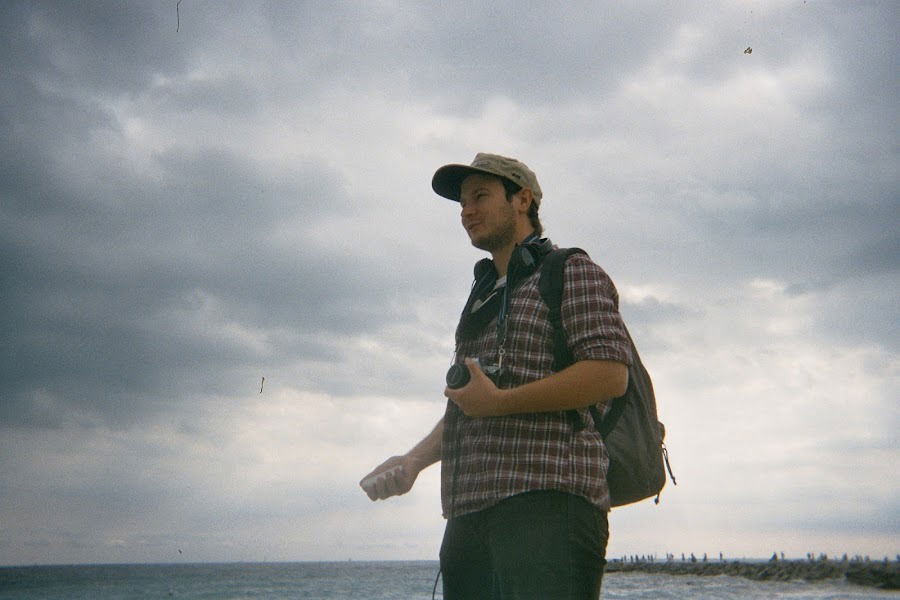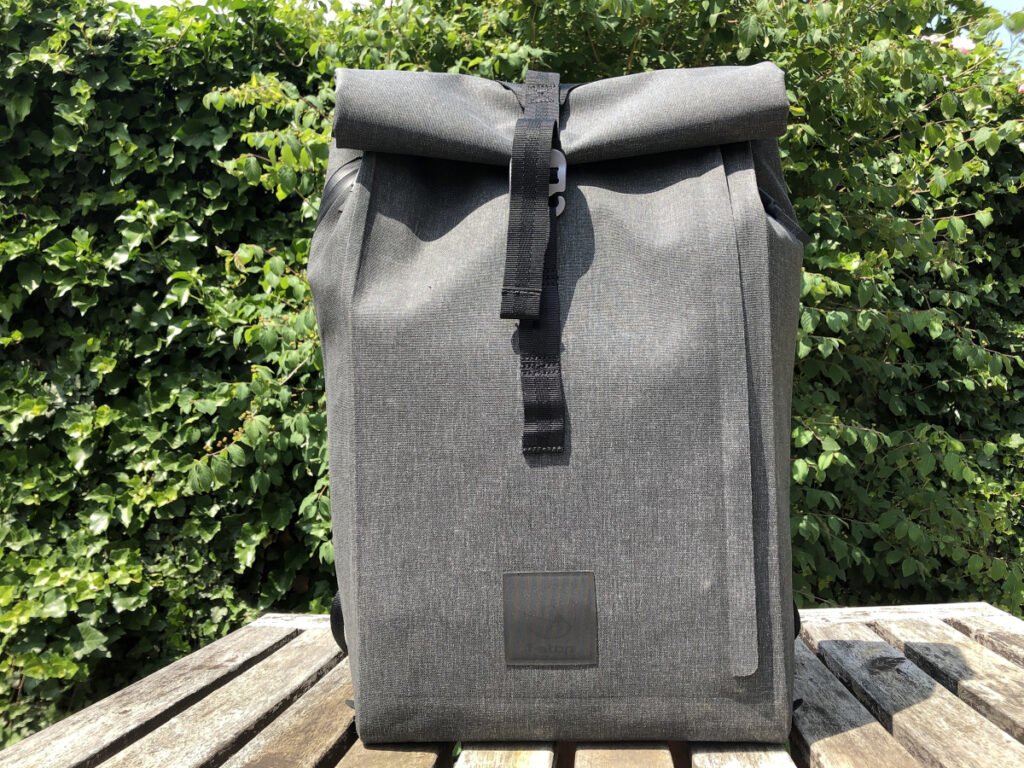Finding the best camera for portraits isn’t easy. With so many brands and models to choose from, it’s difficult to know which camera will help you master the art of portrait photography.
You need a camera with excellent image quality and an autofocus system attuned to human faces. You also need a camera that matches your budget and skill level. Thankfully, we have all bases covered in this article.
The Nikon Z6 II is our favorite camera for portraits right now. It’s a full frame mirrorless that delivers stunning images. It works well in low light and has an AF system perfectly suited to portrait photography. But if that’s not the camera for you, keep reading to see more portrait cameras.
What is the Best Camera For Portraits?
The best camera for portraits helps you master this classic genre of photography. It should help you learn the basics, develop your skills, and produce fabulous results off the bat.
Technically, you can use pretty much any camera to shoot a portrait. But some cameras have features that are particularly useful when shooting portrait photography.
For portraits to look their best, you need a camera with good image quality. That includes low-light performance, color rendition, and dynamic range.
Eye-detection autofocus is another key feature in portrait cameras, helping keep your subjects looking sharp.
We take a closer look at the key features for portrait cameras in the buyer’s guide at the end of the article. Below, you can see a rundown of the best cameras for portrait photography. We then look at each camera in more detail in the following section.
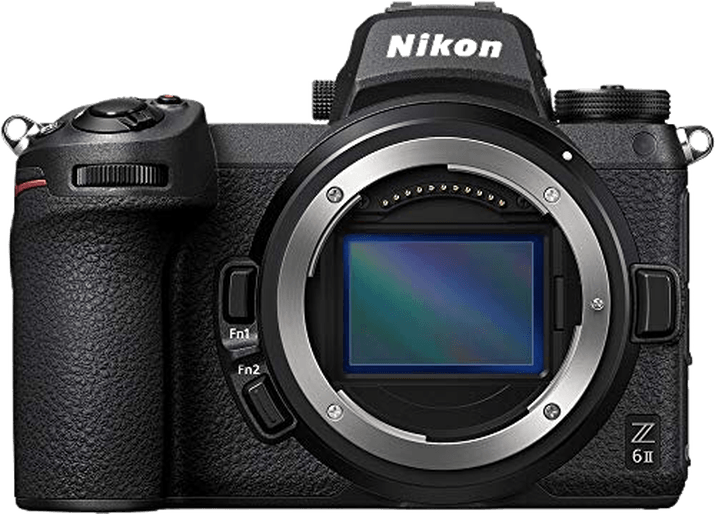
- Excellent low-light focusing
- Lightweight and portable
- Superb low-light dynamic range
- Dual memory card slots
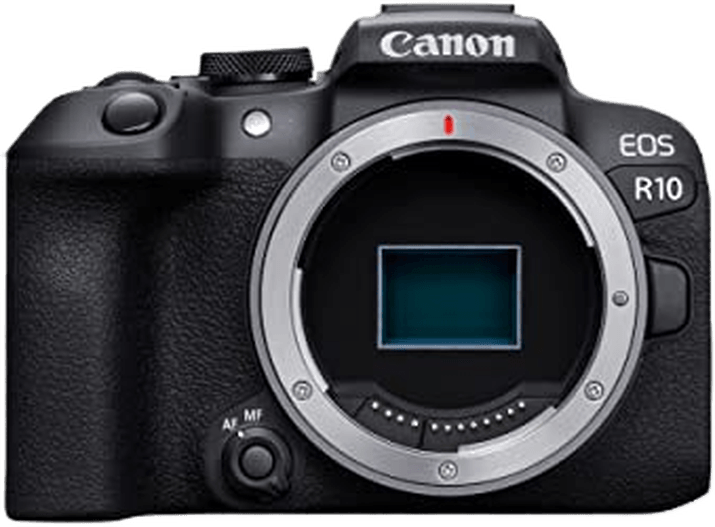
- Powerful APS-C sensor
- Professional-standard Dual-Pixel AF
- 23 fps burst speed (electronic shutter)
- Compact and lightweight camera body
- Excellent video quality with 4K options
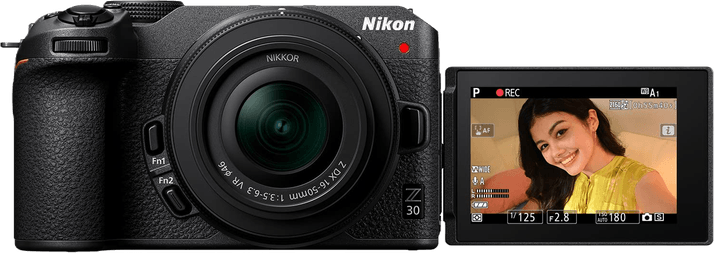
- Compact and lightweight body
- Responsive and accurate AF with eye detection and tracking
- Wide ISO range with excellent low-noise performance at the top end
- Vari-angle screen is perfect for videos and vlogging
- Environmental sealing for outdoor shoots
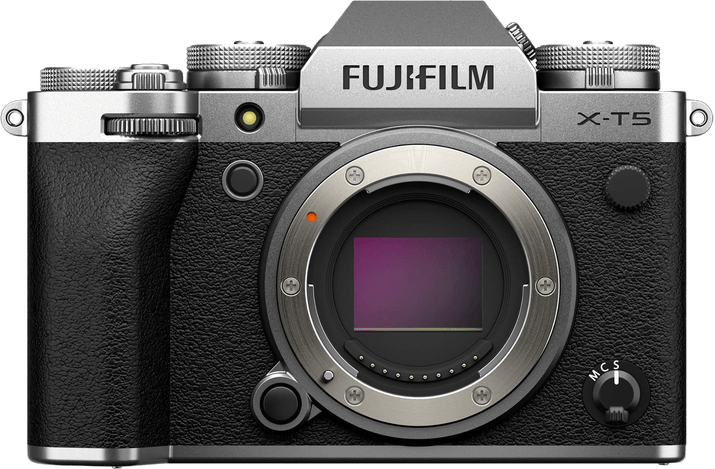
- Incredible 40.2 MP resolution from an APS-C sensor
- AF uses AI to identify and track moving subjects
- Built-in 5-axis image stabilization
- Pixel Shift Multi-Shot mode for ultra high-resolution photos
- Long-lasting, 680-shot battery
- Outstanding 6.2K video recording
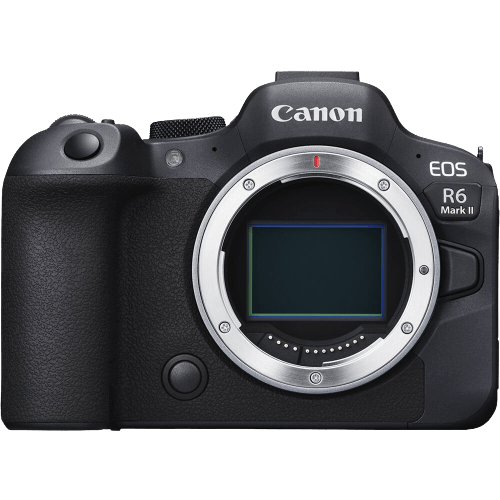
- Excellent dynamic range and low-light performance
- Advanced autofocus with object-detection
- High-speed 40-fps burst mode
- Built-in image and video stabilization
- Ultra-smooth 4K/60p video and webcam functionality
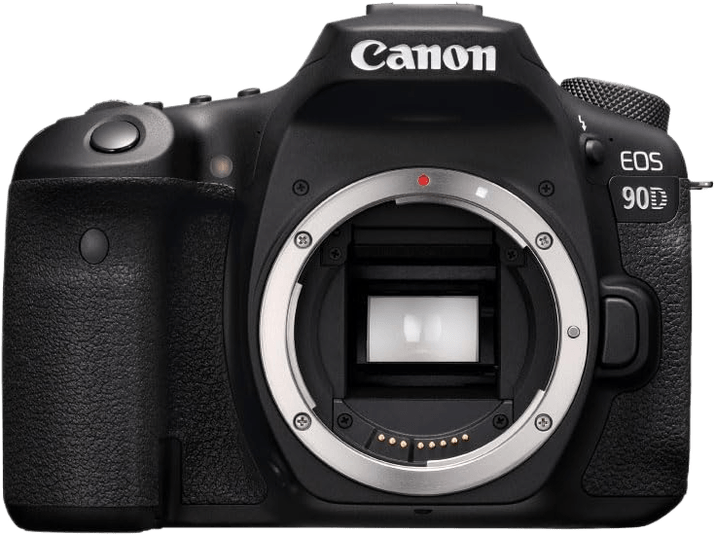
- Excellent 32.5 MP APS-C sensor
- Dual Pixel AF with eye detection
- Decent frame rate of 10 fps
- Good, 1,300-shot battery life
- Live View and 4K/30p Ultra HD video

- Excellent image quality
- Super responsive autofocus
- 5.5 stops of image stabilization
- Fully articulating rear screen
- Powerful video capabilities (4K / 60p, 10-bit video) and live streaming
7 Best Cameras for Portraits
These are the best cameras for portrait photography. They have all the features you need to improve your portraiture. And we’ve included a wide range of cameras, including cameras for beginners and pros, budget-friendly models and more expensive machines.
1. Nikon Z6 II

| Released |
Released
2020
|
| Sensor Format |
Sensor Format
|
| Lens Mount |
Lens Mount
Nikon Z
|
| Megapixels |
Megapixels
24.5 MP |
| Autofocus Points |
Autofocus Points
273 |
| Maximum ISO (Native) |
Maximum ISO (Native)
51,200 |
| Frame Rate |
Frame Rate
14 fps |
| In-body Stabilization |
In-body Stabilization
|
| Max Video Resolution |
Max Video Resolution
|
| Key Features |
Key Features
Dual card slots, eye-detection AF, multiple exposure mode, time-lapse mode
|
| Best |
Best
All-round camera for portrait photography
|
The Nikon Z6 II is the best camera for portraits. It’s a brilliant full frame mirrorless camera with a well-rounded set of features. It performs well in tough situations, and you can use it for pretty much any genre of photography. But we believe it is particularly well-suited to portrait photography.
A full frame CMOS sensor gives you a 24.5 MP image resolution. That’s not record-breaking for a full frame, but the image quality is fantastic.
It delivers clear, sharp details and vibrant, true-to-life colors. The large pixel size also gives you a wide dynamic range, pulling detail from light and dark areas.
You can also shoot stunning portraits in low light thanks to the low-noise performance. An expandable ISO range gives you a 204,800 option at the high end. And there’s a 50 ISO option at the other end, maximizing image quality for knock-out portraits in daylight.
Nikon’s intelligent eye-detection AF is perfect for portraits. It’s quick to identify and lock onto your subject’s face. And once locked, it tracks their movements to keep them in focus. That allows you to snap dynamic portraits while your subject is moving around.
A 14 fps burst is also more than fast enough for portraits. Using a burst is a great way to capture moving subjects for energetic portraits, whether they’re laughing or telling a story.
5-axis image stabilization can be handy for shooting portraits in low light. It allows you to use slower shutter speeds with less risk of camera shake. That means you don’t always have to shoot with a tripod.
Practical features like the tilting touchscreen and dual card slots make a photographer’s life easier. And the bright, accurate electronic viewfinder helps you compose your shots.
While not essential for portrait photography, the Z6 II is a great video camera. It records uncropped 4K video with a 60 fps frame rate and 10-bit 4:2:2 color.
Nikon’s wide selection of portrait lenses is another reason to choose the Nikon Z6 II. It has the Z-mount, so it’s compatible with all the best Nikon Z lenses.
2. Canon EOS R10

| Released |
Released
2022
|
| Sensor Format |
Sensor Format
|
| Lens Mount |
Lens Mount
Canon RF
|
| Megapixels |
Megapixels
24 MP |
| Autofocus Points |
Autofocus Points
651 |
| Maximum ISO (Native) |
Maximum ISO (Native)
32,000 |
| Frame Rate |
Frame Rate
15 fps |
| In-body Stabilization |
In-body Stabilization
|
| Max Video Resolution |
Max Video Resolution
|
| Key Features |
Key Features
Articulating touchscreen, eye-detection AF, hot shoe connection, Wi-Fi connectivity
|
| Best |
Best
Beginner portrait camera
|
The Canon EOS R10 is the best entry-level camera for portraits. The well-thought-out features make it a breeze to use. And the results are consistently fantastic. It’s the perfect starting point for aspiring portrait photographers.
A powerful APS-C sensor gives you a 24.2 MP resolution and bright, detailed images. The 100 – 32,000 ISO range also gives you flexibility to shoot moody portraits in low light. It control digital noise well, even at high ISO settings.
Face and eye-detection AF is a big help for portrait artists. Canon’s Dual Pixel AF system is the best in the business, and these portrait-specific functions make it a dream to use. You’re guaranteed sharp faces in every shot.
The mechanical shutter gives you a rapid 15 fps burst rate. That’s more than enough for portrait photography, but it can help you capture portraits of moving subjects.
A fully articulating touchscreen helps you compose your shot from tricky angles. And 4K video allows you to great high-quality movies. It makes a fantastic vlogging camera, and the webcam functionality makes it a good choice for live streaming too.
For enthusiastic portrait photographers at the start of their journey, the Canon EOS R10 is the perfect camera. It’s optimized for portrait shooting but has a wide range of functions and features users can experiment with.
3. Nikon Z30

| Released |
Released
2022
|
| Sensor Format |
Sensor Format
|
| Lens Mount |
Lens Mount
Nikon Z
|
| Megapixels |
Megapixels
20 MP |
| Autofocus Points |
Autofocus Points
209 |
| Maximum ISO (Native) |
Maximum ISO (Native)
51,200 |
| Frame Rate |
Frame Rate
11 fps |
| In-body Stabilization |
In-body Stabilization
|
| Max Video Resolution |
Max Video Resolution
|
| Key Features |
Key Features
Face and eye-tracking AF, rotating touchscreen, USB charging
|
| Best |
Best
Camera for selfies and social media content
|
The Nikon Z30 is a fantastic little camera that’s ideal for snapping eye-catching selfies and other social media content. It’s not much bigger than a point-and-shoot camera, so it’s an easy fit for any camera backpack.
Despite its compact size, it still has an APS-C sensor with a 20.9 MP resolution. The images are vibrant and clear, helping selfies pop on busy social media platforms.
A wide 100 – 51,200 ISO range can be expanded to 204,800 in low-light. You will experience some digital noise at the very top, but you still get excellent image quality in the low-to-mid range.
Face and eye AF is the perfect tool for portraits, self-portraits, and vlogs. Not only does it detect your subject’s eyes, but it also tracks them as they move. It continuously keeps them in focus.
Vloggers will also love the Nikon Z30. It records uncropped 4K video (30 fps) with a two-hour time limit. The rotating touchscreen makes recording yourself easy, and a built-in stereo mic provides excellent audio.
The Nikon Z30 is the perfect solution to social media portraits and selfies. The compact size makes it easy to use in any location. And the features will give you algorithm-busting media for your social media profiles.
4. Fujifilm X-T5

| Released |
Released
2022
|
| Sensor Format |
Sensor Format
|
| Lens Mount |
Lens Mount
Fujifilm X
|
| Megapixels |
Megapixels
40 MP |
| Autofocus Points |
Autofocus Points
425 |
| Maximum ISO (Native) |
Maximum ISO (Native)
12,800 |
| Frame Rate |
Frame Rate
15 fps |
| In-body Stabilization |
In-body Stabilization
|
| Max Video Resolution |
Max Video Resolution
|
| Key Features |
Key Features
64 low ISO, weather-sealed, high-resolution shot mode
|
| Best |
Best
High-resolution APS-C camera
|
The Fujifilm X-T5 is a groundbreaking camera. It’s a hybrid machine that excels in both photography and videography. But thanks to the powerful APS-C sensor, it’s one of the best cameras for portraits right now.
A 40.2 MP resolution is impressive for any camera. But for an APS-C, it’s downright incredible. Having so many pixels on a small sensor does mean you’re more likely to detect digital noise at the top ISO levels. Even so, the image quality is absolutely fabulous.
An expandable ISO range gives you a max low setting of 64. You need plenty of light, but it’s a great way to maximize your image quality for powerful portraits.
If 40.2 MP at 64 ISO isn’t enough, the X-T5 has a high-resolution shot mode. By combining several exposures to create one image, the camera produces breathtaking 160 MP images. This might be overkill for most portraits, but it render every freckle or eyelash in exquisite detail.
It’s also equipped with 5-axis image stabilization, allowing you to shoot without a tripod in low light.
The autofocus system uses Deep-Learning AI for more accurate subject detection and tracking. That means it’s incredible responsive and highly accurate. It detects a wide range of subjects, including human eyes, animals, and cars.
Portrait photographers will also enjoy Fujifilm’s film simulation modes. They give you the retro aesthetic without the faff of using analog cameras and 35mm rolls of film.
As stated, it’s a fully hybrid machine. It can record stunning 6.2K video at 30 fps and 4K at 60 fps. That’s professional standard movie making.
The single SD card slot is one downside, as those high-res images take up a lot of storage. But the tilting touchscreen and on-camera controls are physical features users will appreciate.
A powerhouse with a stylish body, the Fujifilm X-T5 is a great camera for portraits. This type of power isn’t necessary for beginners, but it’ll serve intermediates and professionals with aplomb.
5. Canon EOS R6 Mark II

| Released |
Released
2022
|
| Sensor Format |
Sensor Format
|
| Lens Mount |
Lens Mount
Canon RF
|
| Megapixels |
Megapixels
24 MP |
| Autofocus Points |
Autofocus Points
4,897 |
| Maximum ISO (Native) |
Maximum ISO (Native)
102,400 |
| Frame Rate |
Frame Rate
40 fps |
| In-body Stabilization |
In-body Stabilization
|
| Max Video Resolution |
Max Video Resolution
|
| Key Features |
Key Features
Head, face, and eye-detection AF, articulating screen, dual card slots, 50 ISO setting
|
| Best |
Best
Intermediate camera for portraits
|
The Canon EOS R6 II is a marvelous camera with a wide range of uses. But its beautiful image quality and advanced autofocus system make it a superb choice for portrait photographers.
A full frame CMOS sensor produces 24 MP images. That might not sound like much for a full frame mirrorless, but the image quality is fantastic. The larger pixels give you low noise at high ISOs and a wider dynamic range.
An expandable ISO range allows you to shoot portraits in difficult lighting. You can push it all the way up to 204,800. You also have a low of 50 ISO, bringing the best out of the full frame sensor.
Canon’s Dual Pixel CMOS AF is a real highlight of the R6 II. It’s optimized for portraits with human head, face, and eye-detection modes. It can also detect other types of subjects, like dogs, horses, or cars.
You also get full autofocus coverage when shooting in burst mode. The camera tracks your subject, keeping them in focus while you follow their movements. This is ideal for taking portraits of a person engaged in an activity.
A rotating touchscreen helps you capture pro-level self-portraits. And image stabilization ensures sharper shots in low light. It also has dual cards slots, so you can shoot for longer without having to swap SD cards.
It’s another camera with excellent video features. 4K at 60 fps is perfect for high-action video subjects like sports or wildlife.
The Canon EOS R6 II has to be a top choice for portrait lovers. You also have your pick of the best Canon RF lenses, which is another huge plus.
6. Canon EOS 90D

| Released |
Released
2019
|
| Sensor Format |
Sensor Format
|
| Lens Mount |
Lens Mount
Canon EF/EF-S
|
| Megapixels |
Megapixels
33 MP |
| Autofocus Points |
Autofocus Points
45 |
| Maximum ISO (Native) |
Maximum ISO (Native)
25,600 |
| Frame Rate |
Frame Rate
10 fps |
| In-body Stabilization |
In-body Stabilization
|
| Max Video Resolution |
Max Video Resolution
|
| Key Features |
Key Features
Eye-detection AF, vari-angle touchscreen, built-in flash, Wi-Fi Connectivity
|
| Best |
Best
DSLR camera for portraits
|
We have all come to terms with the fact DSLRs are on the way out. But for classic genres like portrait photography, models like the Canon EOS 90D still deliver the goods.
The powerful APS-C sensor has an impressive 32.5 MP resolution. That still beats many full frame mirrorless cameras today. And it isn’t just a number. The images are truly sensational with outstanding clarity and vibrant colors.
The Dual Pixel CMOS autofocus system is also perfect for portraits, detecting and tracking your subject’s eyes. It gives you near full coverage of the frame. And you can manually select focus points within the frame, ensuring totally accuracy.
A 10 fps burst give you a fast continuous shooting speed. And that’s 10 fps with full-resolution images and AF coverage, which is impressive with 32.5 MP images.
With 4K video at 30 fps, the 90D is one of the best DSLRs for video. The rotating touchscreen also makes self-portraits easier. And a small settings display on the top of the camera improves the user experience.
The Canon EOS 90D isn’t as flashy or advanced as some mirrorless rivals. But it more than holds its own as a portrait photography camera. You can also pair it with one of Canon’s excellent EF lenses.
7. Sony a7 IV

| Released |
Released
2021
|
| Sensor Format |
Sensor Format
|
| Lens Mount |
Lens Mount
Sony E
|
| Megapixels |
Megapixels
33 MP |
| Autofocus Points |
Autofocus Points
759 |
| Maximum ISO (Native) |
Maximum ISO (Native)
51,200 |
| Frame Rate |
Frame Rate
10 fps |
| In-body Stabilization |
In-body Stabilization
|
| Max Video Resolution |
Max Video Resolution
|
| Key Features |
Key Features
50 ISO, eye-detection AF, USB charging, rotating touchscreen, dual card slots
|
| Best |
Best
Professional camera for portraits
|
Sony dominates the professional end of the mirrorless camera market. And the Sony A7 IV is the best professional camera for portrait photography. It isn’t the latest in the A7 line, but it has everything a photographer needs for pro portraits.
Sony’s Alpha series cameras are known for their power, and the A7 IV doesn’t disappoint. It gives you incredible 33 MP images with exquisite detail and glowing true-to-life colors. The dynamic range impressive and low-noise performance in low light are both impressive.
You can expand the ISO range for a 50 ISO setting, helping you get even better quality from the full frame sensor.
The S-Cinetine color profile is another standout feature. It produces soft yet accurate colors with lovely highlights and a an intense yet subtle range of color tones. You get distinctively cinematic portraits.
Real-time eye-tracking AF is perfect for portrait photography, delivering sharp shots without fail. You also have touch tracking, giving you more manual control over AF on the touchscreen.
The autofocus system also covers 94% of the frame, so you can experiment with composition, and your subject will always be in focus.
Sensor-shift image stabilization is another helpful feature, giving you sharp shots in low light without needing a tripod for support. You won’t need so much heavy equipment at your next shoot.
The Sony A7 IV is also a popular videography camera, thanks to the 4K at 60 fps video recording. But we recommend it as the best professional camera for portraits. It’s ideal for headshots, events, editorials, and fashion photography. It’s also compatible with a fantastic range of Sony FE lenses.
Camera for Portraits Buyer’s Guide
Looking at camera specs can put your head in a spin. And all the numbers and abbreviations look like hieroglyphics to a beginner.
We hope this buyer’s guide helps clears things up. We want you to be able to understand all the important information, so you can make a confident, informed purchase when shopping for a portrait camera.
Key Specs in a Camera for Portraits
This is where we’ll break down the important specifications and features for portrait cameras. You don’t need many flash features for portraits, but there are a few things you should look out for.
Resolution and Image Quality
A camera’s resolution is determined by the number of megapixels on the sensor. The higher the megapixel count, the better the resolution.
In general, a better resolution means better image quality. In most cases, a camera with a higher MP count will produce better-quality images than one with a lower MP count. That’s why resolution is the standout specification when looking for a camera.
Sensor size also has an effect on image quality. Full frame sensors are larger than APS-C sensor and can therefore house more megapixels. This isn’t always the case, but full frame sensors have a higher ceiling.
Even if a full frame sensor has a relatively low MP count, the larger pixel size can improve low-light and dynamic range performance.
But a high MP count isn’t the be-all and end-all of image quality. You also need to consider color rendition, low-light performance, and dynamic range.
Color Rendition, Low-Light Performance, and Dynamic Range
Color rendition relates to the colors produced by the camera. For portraits, you want natural, true-to-life colors with subtle tones. There’s no specific specification for this, so it’s a matter of looking at examples or testing the camera yourself.
When it comes to low-light performance, you want minimal digital noise. Noise is a grainy texture that appears on your images when the camera is struggling for light. It has a detrimental effect on your pictures, reducing clarity, detail, and color accuracy.
Cameras with higher ISO levels tend to have better low light performance. Full frame cameras generally deal with low light better than APS-C cameras. However, most cameras will experience some noise at the very top of their range.
Dynamic range the camera’s ability to render detail in both dark and light areas of the same image. This is important if you’re shooting a scene with uneven lighting. There’s no spec for this, but full frame cameras tend to have better dynamic range thanks to the larger pixels.
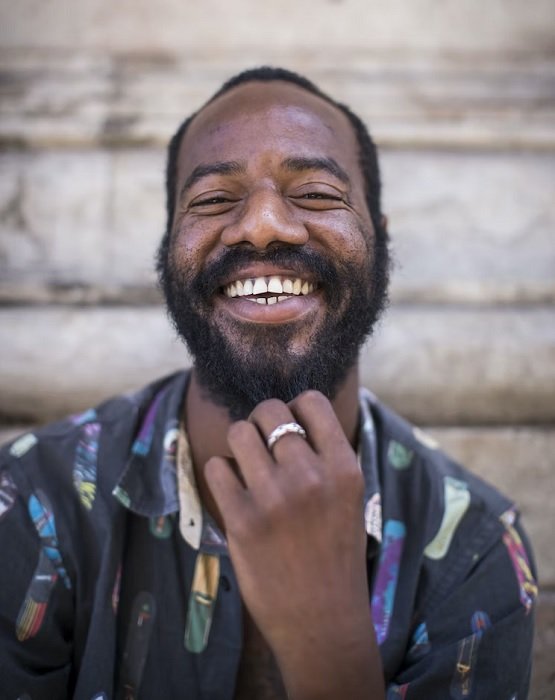
Autofocus
You don’t need the most advanced autofocus system for portraits. But there are a few AF features that can really help portrait photographer get the shots they want.
The key feature is face or eye-detection autofocus. This is where the camera detects your subjects face or eyes and locks on so you get a portrait where your subject is perfectly in focus.
Face detection is good enough for beginners. But portraits photographers should be looking for cameras with eye-detection AF.
This gives you much better accuracy. And it ensures sharp shots even if you’re using an ultra-shallow depth of field.
You also want AF subject tracking, so the camera holds focus on the subject’s eye even when they move. This allows more freedom of movement for you and your subject.
Burst Mode
Burst mode isn’t essential for portrait photography, and you certainly don’t need a super fast burst. But it is a great tool for capturing lively, energetic portraits with moving subjects.
Burst speed isn’t so important, but you do want full resolution when shooting in burst mode. And you’ll need full autofocus coverage with continuous shooting. This makes sure the subject stays in focus if they move between shots.
Image Stabilization
Image stabilization is only important if you’re shooting portraits in low light. This features allows you to use slower shutter speeds with a reduced risk of camera shake and motion blur. Some cameras give you up to five stops of compensation.
Many portrait photographer use a tripod in low-light situations, but tripods are cumbersome and restrict your movement.
Using image stabilization gives you more freedom with your exposure settings, and it allows you to shoot from hand.
What is the Best Lens for Portraits?
There are a wide range of lenses you can use for portraits. A large part of choosing a portrait lens comes down to the style of portraits you want to capture.
Something simple like a 50mm prime lens is great for portraits. These lenses usually have a fast max aperture, which is great for bokeh. They also give you a medium view, which is nice for bust-style or wider portraits.
Short telephoto lenses are the most prized by portrait photographers. Anything from 70mm to 120mm fits into the “portrait lens” bracket. These give you a tighter composition and more background separation.
You can use zoom or prime lenses for portraits. But professional portrait photographers tend to favor prime lenses for their superior picture quality. Zooms give you more flexibility, but they are prone to visual defects.
You can see all our articles on the best portrait lenses for each brand below.
- Best Portrait Lenses (All Brands)
- Best Canon Lenses for Portrait
- Best Nikon Lenses for Portraits
- Best Sony Lenses for Portraits
Conclusion: The Best Camera For Portraits
Portrait photography is one of the earliest genres and remains one of the most popular with photographers at all levels. And with the best camera for portraits, you can master this classic type of photography.
Image quality, subject-detection AF, and low-light performance were some of the top priorities. And all the cameras on this list tick those boxes.
The Nikon Z6 II is our top camera for portraits. The full frame sensor gives you lovely images, and the AF system keeping your subject in sharp focus. The Canon EOS R10 is the best for beginners, and the Sony A7 IV is the top pro choice.
